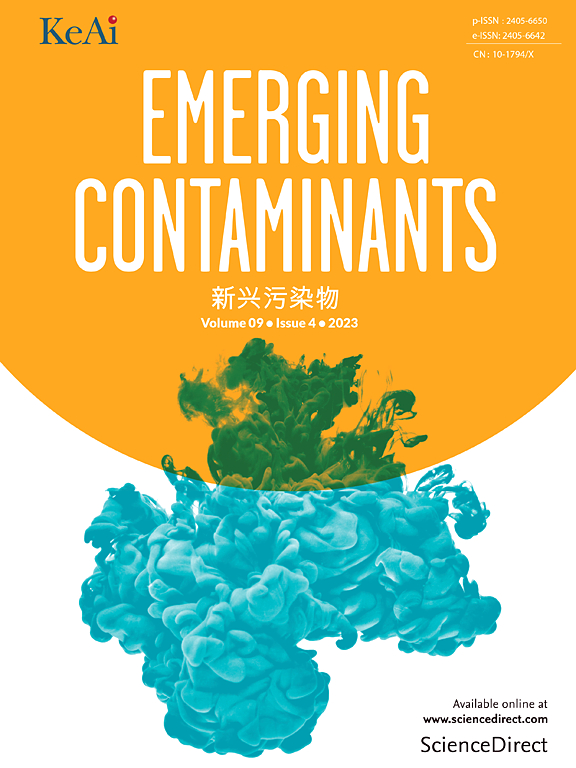Salmon as an ecological pathway of contaminants into Alaskan food webs
IF 6.9
2区 环境科学与生态学
Q1 ENVIRONMENTAL SCIENCES
引用次数: 0
Abstract
Salmon are important fish taxa for humans and animals in hemiboreal and subarctic ecosystems. The presence of trace elements and their bioaccumulation across a marine food web raises potential health risk concerns associated with human consumption. Sixteen trace element concentrations and their health risk assessments were determined in seven different tissues from two Southeast Alaska salmon species. Chum salmon consistently had higher trace element concentrations which may be attributed to a wider variety of diets, generally longer lifespans, and more ocean time compared to pink salmon. Chum kidney and liver samples exceeded the tolerable daily intake for arsenic, indicating a significant risk to wildlife. However, muscle tissues revealed a low risk for human consumption. The target hazard quotients for chronic toxicological risk of all tissue samples did not exceed the hazardous threshold, and the carcinogenic risk values for arsenic, cadmium, chromium, and lead all indicate a negligible cancer risk from human consumption. These results highlight the critical need for continuous monitoring of trace elements in salmon and the potential implications for both human and animal health.

鲑鱼是污染物进入阿拉斯加食物网的生态途径
在半北极和亚北极生态系统中,鲑鱼是人类和动物的重要鱼类类群。微量元素的存在及其在海洋食物网中的生物积累引起了与人类食用有关的潜在健康风险问题。在阿拉斯加东南部两种鲑鱼的七种不同组织中确定了16种微量元素浓度及其健康风险评估。鲑鱼的微量元素含量一直较高,这可能是因为与粉鲑鱼相比,它们的饮食种类更丰富,寿命更长,在海洋里待的时间更长。Chum的肾脏和肝脏样本超过了砷的每日可耐受摄入量,表明对野生动物有重大风险。然而,肌肉组织显示人类食用的风险很低。所有组织样本的慢性毒理学风险的目标危害商均未超过危险阈值,砷、镉、铬和铅的致癌风险值均表明人类食用的癌症风险可以忽略不计。这些结果强调了持续监测鲑鱼中微量元素的迫切需要以及对人类和动物健康的潜在影响。
本文章由计算机程序翻译,如有差异,请以英文原文为准。
求助全文
约1分钟内获得全文
求助全文
来源期刊

Emerging Contaminants
Medicine-Public Health, Environmental and Occupational Health
CiteScore
10.00
自引率
6.70%
发文量
35
审稿时长
44 days
期刊介绍:
Emerging Contaminants is an outlet for world-leading research addressing problems associated with environmental contamination caused by emerging contaminants and their solutions. Emerging contaminants are defined as chemicals that are not currently (or have been only recently) regulated and about which there exist concerns regarding their impact on human or ecological health. Examples of emerging contaminants include disinfection by-products, pharmaceutical and personal care products, persistent organic chemicals, and mercury etc. as well as their degradation products. We encourage papers addressing science that facilitates greater understanding of the nature, extent, and impacts of the presence of emerging contaminants in the environment; technology that exploits original principles to reduce and control their environmental presence; as well as the development, implementation and efficacy of national and international policies to protect human health and the environment from emerging contaminants.
 求助内容:
求助内容: 应助结果提醒方式:
应助结果提醒方式:


